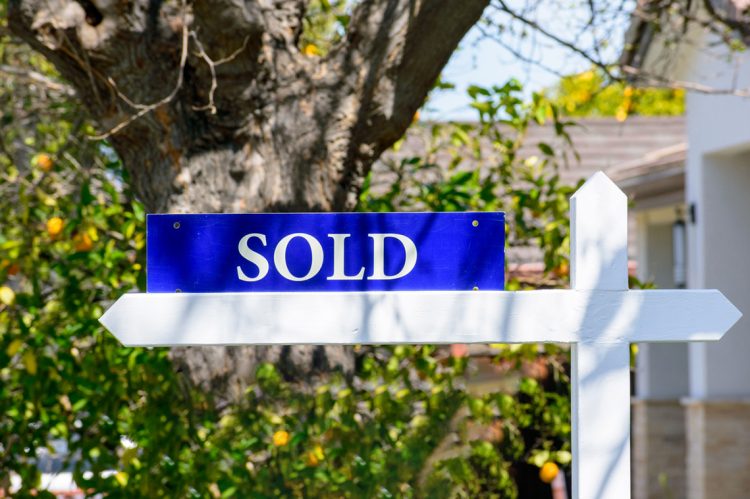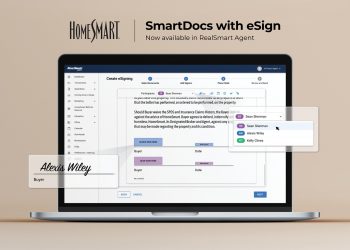Existing-home sales continued to decrease for the twelfth straight month in January, but only dropped slightly, according to the National Association of REALTORS®’ (NAR) recent existing-home sales report.
NAR’s latest data on existing homes found that total existing-home sales slid 0.7% to a seasonally adjusted annual rate of 4 million. Year-over-year, sales retreated 36.9% (down from 6.34 million last year). Month-over-month sales were mixed among the four major regions, as the South and West registered increases, while the East and Midwest experienced declines. All regions recorded year-over-year declines.
Key data points:
- Total housing inventory was 980,000 units, up 2.1% from December and 15.3% from one year ago (850,000). Unsold inventory sits at a 2.9-month supply at the current sales pace, unchanged from December, but up from 1.6 months last year.
- The median existing-home price was $359,000, an increase of 1.3% from last year ($354,300). This marks 131 consecutive months of YoY increases, the longest-running streak on record.
- Properties typically remained on the market for 33 days, up from 26 days in December and 19 days last year. Of homes sold, 54% were on the market for less than a month.
- First-time buyers were responsible for 31% of sales in January, identical to December, but up from 27% one year ago.
- All-cash sales accounted for 29% of transactions, up from 28% in December and 27% last year. Individual investors or second-home buyers, who make up many cash sales, purchased 16% of homes, unchanged from December, but down from 22% one year ago.
- Distressed sales—foreclosures and short sales—represented 1% of sales, identical to last month and one year ago.
Single-family and condo/co-op sales:
- Single-family home sales declined to 3.59 million, down 0.8% from 3.62 million in December and 36.1% from one year ago. The median existing single-family home price was $363,100, up 0.7% from last year.
- Existing condominium and co-op sales were at 410,000 units, unchanged from December, but down 43.1% from last year. The median existing condo price was $320,000, an annual increase of 5.2%.
Regional breakdown:
- Existing-home sales in the Northeast retracted 3.8% to 500,000, down 35.9% from one year ago. The median price in the Northeast was $383,000, up 0.3% from last year
- In the Midwest, existing-home sales slid 5% to 960,000, declining 33.3% from one year ago. The median price in the Midwest was $252,300, up 2.7% from last year.
- Existing-home sales in the South rose 1.1% to 1.82 million, a 36.6% decrease from the prior year. The median price in the South was $332,500, an increase of 3.4% from one year ago.
- In the West, existing-home sales elevated 2.9% to 720,000, down 42.4% from last year. The median price in the West was $525,200, down 4.6% from one year ago.
Major takeaways:
“Home sales are bottoming out,” said NAR Chief Economist Lawrence Yun. “Prices vary depending on a market’s affordability, with lower-priced regions witnessing modest growth, and more expensive regions experiencing declines.”
Yun added, “Inventory remains low, but buyers are beginning to have better negotiating power. Homes sitting on the market for more than 60 days can be purchased for around 10% less than the original list price.”
Additionally, NAR President Kenny Parcell, broker/owner of Equity Real Estate Utah, commented that, “REALTORS® help consumers realize the American Dream of property ownership, both residential and commercial. A REALTOR® possesses trusted expertise and a thorough understanding of local market conditions that prove valuable throughout the entire real estate transaction.”
“Sales of existing homes continued to decline in January, registering a pace of 4 million, down 0.7%,” commented realtor.com® Chief Economist Danielle Hale. “While this marks a 12th-straight month of decline, the month-to-month drops have slowed consistently, and December’s data was revised slightly higher. Sales in the South (+1.1%) and West (+2.9%) ticked up in January, while sales in the Northeast and Midwest continued to decline, but from one year ago, the biggest slowdown has been in the West and South. Compared to one year ago, home sales in the U.S. and all four regions are one-third or more lower.”
Lower mortgage rates toward the end of 2022 are likely a factor behind the floor in home sales that appears to be developing. As observed in recent months, the share of first-time homebuyers is up compared to one year ago, as decreasing buyer competition creates opportunities. In January, first-time homebuyers made up 31% of purchasers, on par with December 2022 and up from January 2022 (27%).
The number of homes for sale is recovering, and combined with fewer buyers in the market, balance is shifting back toward those who are shopping. Months supply—the number of months it would take to sell all currently unsold homes at today’s sales pace—held steady at 2.9 months, roughly on par with the level it has seen since May 2022, but up from 1.6 months one year ago. Although buyers face less competition from others, home prices are still high and mortgage rates are up compared to one year ago, meaning that while buyers have some advantages, other challenges remain.
Furthermore, housing vacancy rates remain low for both homeowners and renters. A decade of underbuilding has led to scarcity in housing not seen for generations, a factor that is keeping both home prices and rents elevated. Nationwide, the median sales price rose 1.3% in January, and prices were up in the Northeast (0.3%), Midwest (2.7%) and South (3.4%). Only the West, which is not only the nation’s most expensive region, but also the most dependent on the recently challenged tech sector, is seeing home price declines relative to one year ago (-4.6%).”
For the full report, click here.












